Hummingbirds
Hummingbirds are not only beautiful- they are fast! Their wing-beats have been measured at 200 per second. Hummingbirds can hover and even fly backwards. This agility helps them to get the necessary amount of nectar, small insects and water they need to sustain themselves.
Planting tubular flowers like Bee balm or Trumpet creeper will help attract hummingbirds. Nectar feeders will supplement the diets of your neighborhood hummers. Use four parts water to one part sugar to make a solution. Do not use honey. Boil the water, turn off heat, and then add the sugar. Adding red dye to the solution is not necessary. Remember to thoroughly clean feeders every three or four days and refill with fresh solution.
There are over 350 species of hummingbirds worldwide. The Ruby-throated hummingbird is the only species that breeds in the eastern United States.They migrate here from Southern Mexico and Central America every spring and return in the fall. Males normally arrive first and scout out territories rich in food. Setting out feeders in late March will attract the males to your area.
Leave feeders up through the fall months to provide these migratory birds with food for their journey. Also, migrating birds moving through the area will have a place to refuel.
Butterflies and Bees
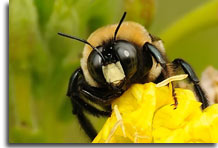
Butterflies and bees can add a special grace to your garden and both play an important ecological role in the reproduction of plants. Butterflies in Maryland have evolved to make the most use of native plants. See the table below for more information on plants for butterflies.
If you would like your garden to become a butterfly "nursery", then you may want to include those plants that are used by caterpillars. These plants are referred to as ‘host’ plants.
Bees are a great addition to any garden, especially because they perform important roles in pollinating plants. About 30% of the food we eat has been pollinated by a bee!
To provide butterflies and bees with water, add about a quarter inch of sand to a large saucer, such as a clay flowerpot liner. Add water until a quarter inch of water rises above the sand. Place a few flat stones that rise above the water and others that just touch the surface. This will allow insects to drink without drowning.
Flowers, flowers, flowers!
Hummingbirds, butterflies and bees come to flowers to feed on the nectar that they produce. Iridescent hummingbirds, glimmering in the sunlight as they dart from flower to flower, are a rewarding sight for any wildlife gardener. A garden filled with flowers blooming at various times from spring to fall may be visited not only by hummingbirds, but also by a colorful assortment of butterflies, bees and nectar-eating moths.
There is a practical side to the color and beauty of flowers and their nectar-eating visitors. Flowers use these animals to transfer pollen to other flowers of the same kind. In this way, the hummingbirds and insects play a vital role in the reproduction of many plants. The colors on the animals serve to protect them from predators by camouflage or to warn predators against their toxic nature.
Planting Tips
- Have your soil tested. Contact the University of Maryland Soil Testing Lab, through your county extension office.
- Choose your plants according to the recommendations made by your soil test results and your nurseryman.
- Most plants that attract hummingbirds, butterflies and bees need lots of sun. Be sure to plant your garden where it can get the most sun.
- Use little, if any, pesticides in the part of your garden meant for butterflies and bees. Try more natural means of pest control. Ladybird beetles (lady bugs), green lacewings, spiders and praying mantises are great at naturally controlling garden pests.
- Use little, if any, herbicides. The native grasses and flowers that will grow in your garden in addition to your plantings will greatly benefit your butterflies and bees.
- Don't take whole native plants from the wild. Take seeds and cultivate them yourself if proper permission has been obtained. Plants growing in the wild are an important part of the natural community in which they are found.
In addition to the table below, you can consult the US Fish and Wildlife Service guide, “ Native Plants for Wildlife Habitat and Conservation Landscaping in the Chesapeake Watershed.”
Native Plants for Wildlife Habitat and Conservation Landscaping in the Chesapeake Watershed.”
Plant Name | Photo | Attracts | Blooms | Soil |
Asters
(Aster sp.) |
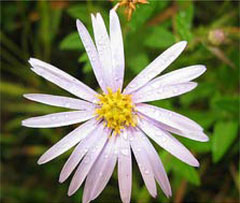 |

 | August – October | |
Bee Balm
(Monarda didyma) |
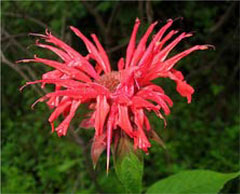 |


 | July – September | Moist |
Boneset
(Eupatorium perfoliatum) | |

 | July –October | Dry-Moist |
Cardinal flower
(Lobelia cardinalis) |
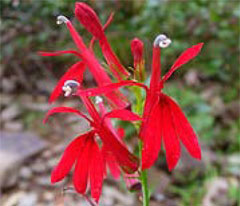 |
 | July – September | Moist |
Columbine
(Aquilegia canadensis) |
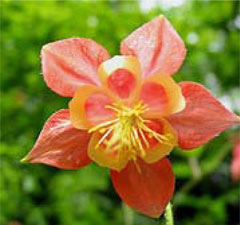 |
 | April – July | Dry |
Coral Bells
(Heuchera sanguinea) |
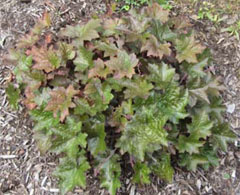 |
 | April – June | Moist |
Evening primrose
(Oenothera biennis) |
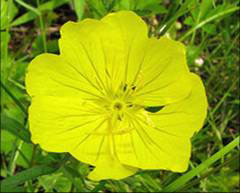 |

 | June-October | Dry |
Goldenrod
(Solidago sp.) |
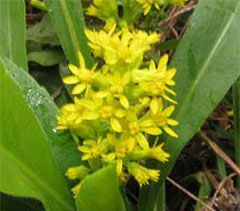 |
 | July – September | Dry |
Ironweed
(Vernonia altis |
sima) |
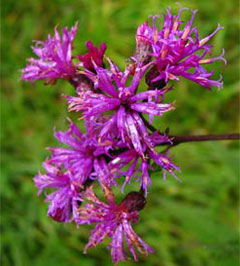 |
 | August-October | Moist |
Joe-pye Weed
(Eupatorium purpureum) |
 |

 | July – September | Moist |
(Liatris sp) |
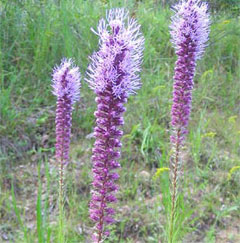 |

 | July – September | |
Milkweed
(Asclepias sp.) |
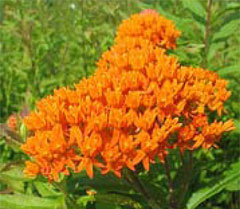 |

 | June – August | Moist |
Purple Coneflower
(Echinacea purpurea) |
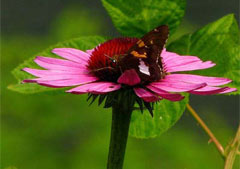 |
 | June – October | Dry |
Trumpet Creeper
(Campsis radicans) |
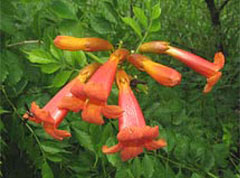 |
 | June – September | |
Turks cap Lily
(Lilium superbum) |
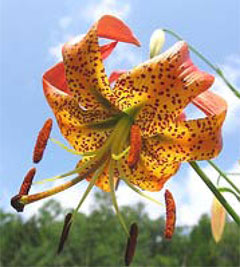 |

 | July – September | Moist |
Virginia bluebells
(Mertensia virginica) |
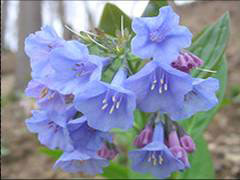 |
 | April – May | Moist |
Invite Wildlife to Your Backyard!
For more information, please contact:
Maryland Department of Natural Resources
Wildlife and Heritage Service
Tawes State Office Building, E-1
Annapolis MD 21401
410-260-8540
Toll-free in Maryland: 1-877-620-8DNR
[email protected]
Acknowledgements:
- Bee on Primrose, courtesy of Richard Orr
- Coral Bells, photo courtesy of Dan Shiplett
- All other photos, courtesy of Kerry Wixted